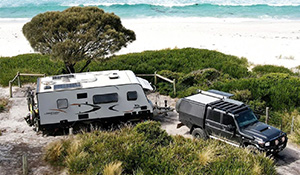ADVICE – What’s a DPF and how does it work?
Words: via Practical Motoring
Diesel contains a bunch of harmful compounds although regulators are mainly concerned about controlling the Big Three: carbon dioxide (CO2); Nitrogen Oxides (NOx); and particulates. But reducing, say, nitrogen oxides can see an increase in particulates.

While some car makers have trialled exhaust gas recirculation on diesel engines, sure, this can help to reduce NOx emissions because an amount of exhaust gas is being directed back into the engine’s air intake thus requiring less fresh air but doing this reduces cylinder temperatures and increases particulate matter. And because particulates are carcinogenic (meaning they can cause cancer) we really don’t want more of the stuff being produced.
Therefore, we have diesel particulate filters. These things capture and store the particulates (or soot) caused by diesel engines. But, because DPFs, like any filter, only have a certain capacity the particulates/soot needs to be burned off to ‘regenerate’ the DPF. The regeneration process ‘cleanly’ burns off the particulates/soot with a DPF able to reduce particulate emissions by around 80% compared with your diesel-powered vehicle not having one.

How do I know if my diesel particulate filter is blocked?
If your car’s DPF hasn’t regenerated (explained below) and has become blocked then you’ll see a warning light like the one shown below.

Why would my diesel particulate filter become blocked?
Simple, you’re driving only short distances and at low speeds. Most car makers suggest a diesel particulate filter will last around 160,000km before needing replacement. I’ve owned my diesel-powered car for seven years now and I’ve never seen the DPF warning light, but that’s because my driving habits meet the requirements for regeneration. This is another reason why those living in the city and who only drive short distances are better off buying a petrol-powered vehicle.

How does a diesel particulate filter regenerate?
There are two ways in which your vehicle will ‘regenerate’ the DPF (usually once the filter has hit 45 per cent capacity), via either ‘passive’ or ‘active’ regeneration.
Passive regeneration occurs without the drive knowing when the vehicle is running at, say, highway speeds for a sustained period which is usually around 30min or longer. This allows the exhaust temperature to heat right up to burn off the particulate/soot.
Active regeneration was introduced to ensure those drivers who only drive short distance and thus don’t meet the threshold for passive regeneration could still have the particulate in their DPF burnt off. Once the filter has hit a certain threshold and the vehicle is being driven, extra fuel will be injected, an ECU process, to help increase the exhaust temperature and burn off the particulate. When active regeneration is in process it’ll usually take around 15min of driving at around 60km/h or more in top gear.

What if a DPF warning light stays on?
If you’ve taken your vehicle for a good highway run and the warning light is still on with another warning light of what looks like a ‘spring’ then you’ll need to get it checked by your mechanic. If you’ve turned your car off and then on again and the engine warning light is on then you shouldn’t drive the vehicle. You don’t want to let a DPF issue go unchecked because if the worst happened and it needed replacing you could be up for thousands of dollars in replacement costs. Whereas getting a blocked DPF unblocked by a mechanic might only cost a few hundred bucks.

Can I remove my DPF?
No. Some services offer a DPF delete (or bypass) for when you’re driving off-road but a quick check of NSW laws shows that removing ‘pollution’ gear and driving on any road, be it bitumen, a race track or a bush track is illegal and substantial fines of more than $10,000 can be handed down.

What about if you’re off-roading and a DPF becomes blocked?
In short, though, most 4x4s have minimum speeds at which passive regeneration will occur, so you’ll need to be at that speed or greater.









